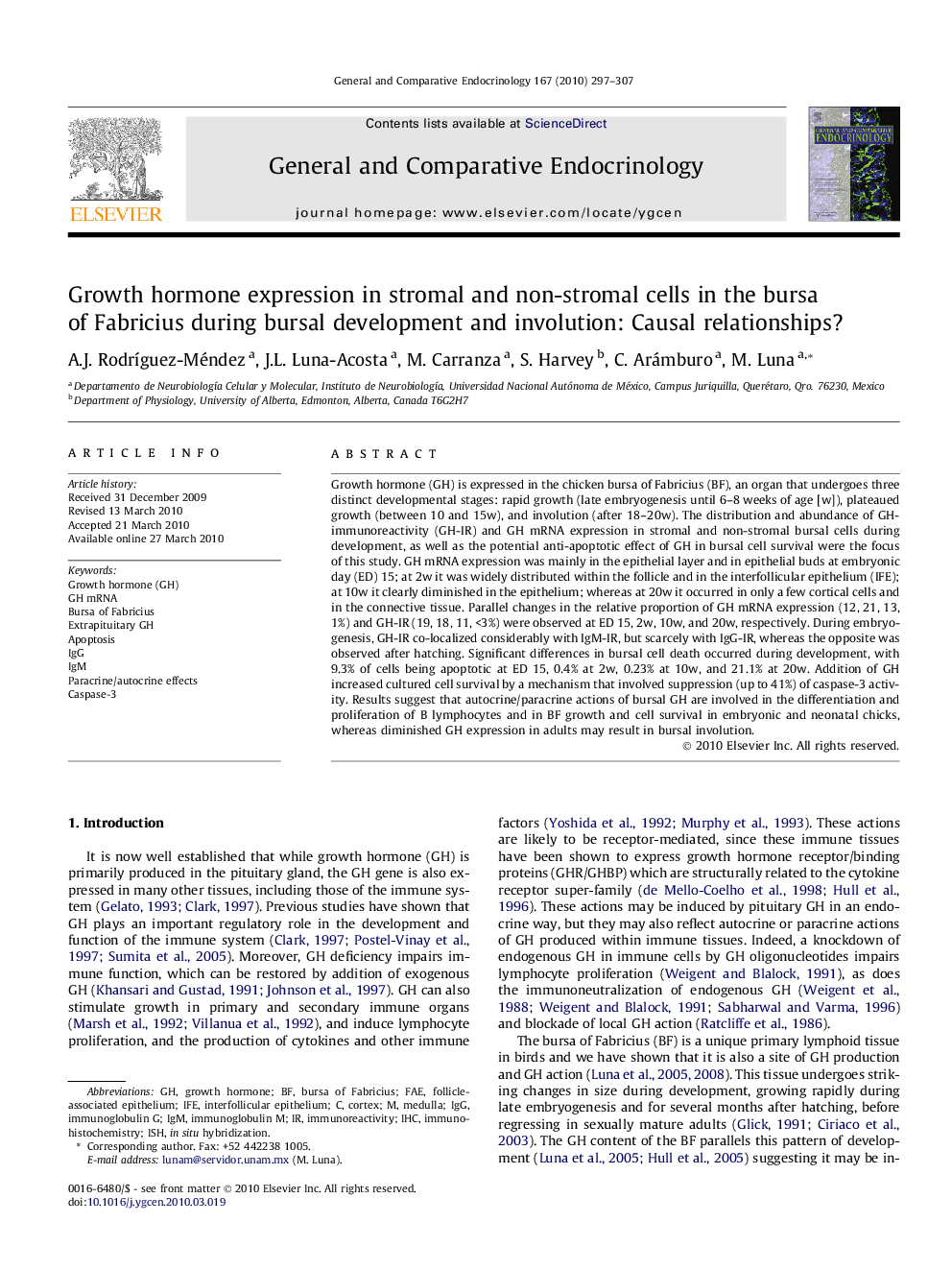| Article ID | Journal | Published Year | Pages | File Type |
|---|---|---|---|---|
| 2801001 | General and Comparative Endocrinology | 2010 | 11 Pages |
Growth hormone (GH) is expressed in the chicken bursa of Fabricius (BF), an organ that undergoes three distinct developmental stages: rapid growth (late embryogenesis until 6–8 weeks of age [w]), plateaued growth (between 10 and 15w), and involution (after 18–20w). The distribution and abundance of GH-immunoreactivity (GH-IR) and GH mRNA expression in stromal and non-stromal bursal cells during development, as well as the potential anti-apoptotic effect of GH in bursal cell survival were the focus of this study. GH mRNA expression was mainly in the epithelial layer and in epithelial buds at embryonic day (ED) 15; at 2w it was widely distributed within the follicle and in the interfollicular epithelium (IFE); at 10w it clearly diminished in the epithelium; whereas at 20w it occurred in only a few cortical cells and in the connective tissue. Parallel changes in the relative proportion of GH mRNA expression (12, 21, 13, 1%) and GH-IR (19, 18, 11, <3%) were observed at ED 15, 2w, 10w, and 20w, respectively. During embryogenesis, GH-IR co-localized considerably with IgM-IR, but scarcely with IgG-IR, whereas the opposite was observed after hatching. Significant differences in bursal cell death occurred during development, with 9.3% of cells being apoptotic at ED 15, 0.4% at 2w, 0.23% at 10w, and 21.1% at 20w. Addition of GH increased cultured cell survival by a mechanism that involved suppression (up to 41%) of caspase-3 activity. Results suggest that autocrine/paracrine actions of bursal GH are involved in the differentiation and proliferation of B lymphocytes and in BF growth and cell survival in embryonic and neonatal chicks, whereas diminished GH expression in adults may result in bursal involution.
